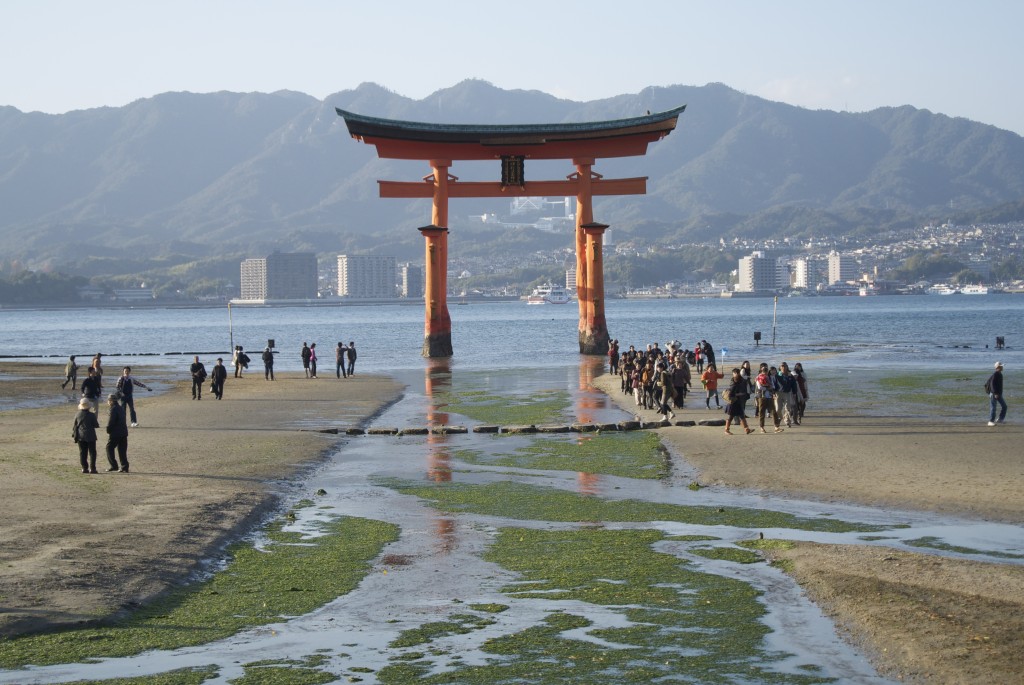
The most famous torii in Japan? Itsukushima Shrine at low tide...
There was another short quiz on an entertainment show ast night on television. It may be that competition with all the Christmas publicity is bringing up thoughts of Hatsumode…
There were only two questions on the show last night. The first concerned what bird was referred to in the meaning of torii, which literally means ‘bird roost’.
Answers ranged from pigeons (associated with Hachiman), to crows (they speak with the voice of the gods, as in the example of yatagarasu), to the phoenix (which sits atop Buddhist buildings like Byodo-in).
The real answer – namely chickens, or more properly cockerels ~ came as a surprise to panellists, who had clearly never read Kojiki! The sacredness of the cockerels was held to derive from their role in the Rock-Cave myth when Amaterasu’s retreat plunged the world into darkness. However, I’ve also read of another theory, namely that Korean villages used to keep chickens on a roost at the edge of villages, the shape of which was like an empty entrance gate or torii.

The second question was to do with the reason for the prevalence of ginkgo trees (ichou) at shrines. I must confess to not knowing this one. Answers ranged from the colour yellow being significant, to the nuts providing food.
The answer turned out to be that ginkgo trees are more resistant to burning than other trees, because they retain moisture. The risk of fire was ever present in Japan of the past, and measures to prevent or contain fire were a constant concern. Something to look out for when next visiting a shrine, perhaps…

Leave a Reply